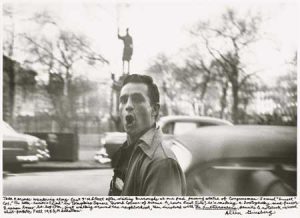Book Condition & Grading
Book collectors generally want books that are in as close to their original condition as possible. Books that appear new & unread (or nearly so), are most desirable.
Booksellers and collectors grade books (and dust jackets) using standardized terms:
Very Fine is a flawless copy, perfect in every way and probably never read. These are few and far between. “Very fine” isn’t always used; many dealers simply use “fine” as a descriptor for such a book. Even a brand new book right out of the box from the publisher may not be very fine. Many newly-published books have some small defect.
Fine (or F) is a copy with no real defects, but is not necessarily as pristine as a very fine copy. Most new books are in fine condition. The book may have been read, but with care. Any flaw, such as a slightly bumped corner, rubbed spot, slight soiling, or a tiny tear, will be noted. (Example: “slightly rubbed, else fine.”) This is a book that essentially appears unread.
Very Good (or VG) is a copy with one or more small defects. It may be a little rubbed, have a small tear, a dinged corner, or other minor defect. Collectors generally prefer books in very good or better condition. Some new books may be in very good condition.
Good (or G) denotes a copy with some obvious, larger flaws, or a number of smaller ones. There may be a larger tear in the dustjacket, a badly bumped corner, a large gift inscription, be very sunned, have a creased or cocked spine, significant edgewear or rubbing, or have other defects. Ex-library books sometimes fall into this category. Makes a good reading copy, but not generally in great demand by collectors.
Poor/Fair indicates a copy with very serious defects. It may actually have some loose pages, underlining or highlighting, or be very soiled. Except in unusual circumstances books in poor or fair condition aren’t desired by collectors. Ex-library books often fall into this category.
Hardcover books and their dustjackets are graded separately. In such a case the dustjacket grade is stated last. For example, a condition may be described as Fine/Very Good (or F/VG) which means a fine book in a very good jacket. A missing dustjacket will greatly reduce the value of any book as most collectors are unwilling to buy an incomplete book.
Sometimes a book grade may include a +/- sign, for example, “G+.” This means that the bookseller considers the book to be in good condition, but approaching very good condition. It’s a fine line, and most booksellers don’t bother with +/- designations.
How Printing Errors Effect a Book’s Value
Have you ever brought a new book home, only to discover that the cover was on backwards, or there were printing errors (for instance, pages repeated, out of sequence, or upside down)? If so, perhaps you’ve wondered how it affects the book’s collectible value.
Such errors are considered defects and will almost always have a negative impact on the book’s desirability. (Exceptions to this rule are few.)
Unlike with postage stamps (where printing errors are extremely rare, and greatly increase the stamp’s desirability & value), printing or binding errors are not desired by book collectors. Collectors will prefer a copy of the book which is as close to perfect as possible. (See the condition & grading terms above.)
Printing errors are fairly common. Many get caught by quality control before the books leave the publisher, but some do slip by & get to bookstores.
If you buy a misbound or misprinted book, you can take it back to the store, and they’ll be glad to exchange it for a correctly-bound one. (They’ll return the defective copy to the publisher.)
Other Factors Affecting Value
For information on how bookplates affect value, see our bookplates article. And, we think you’ll find our article on how to value your books interesting, too.



